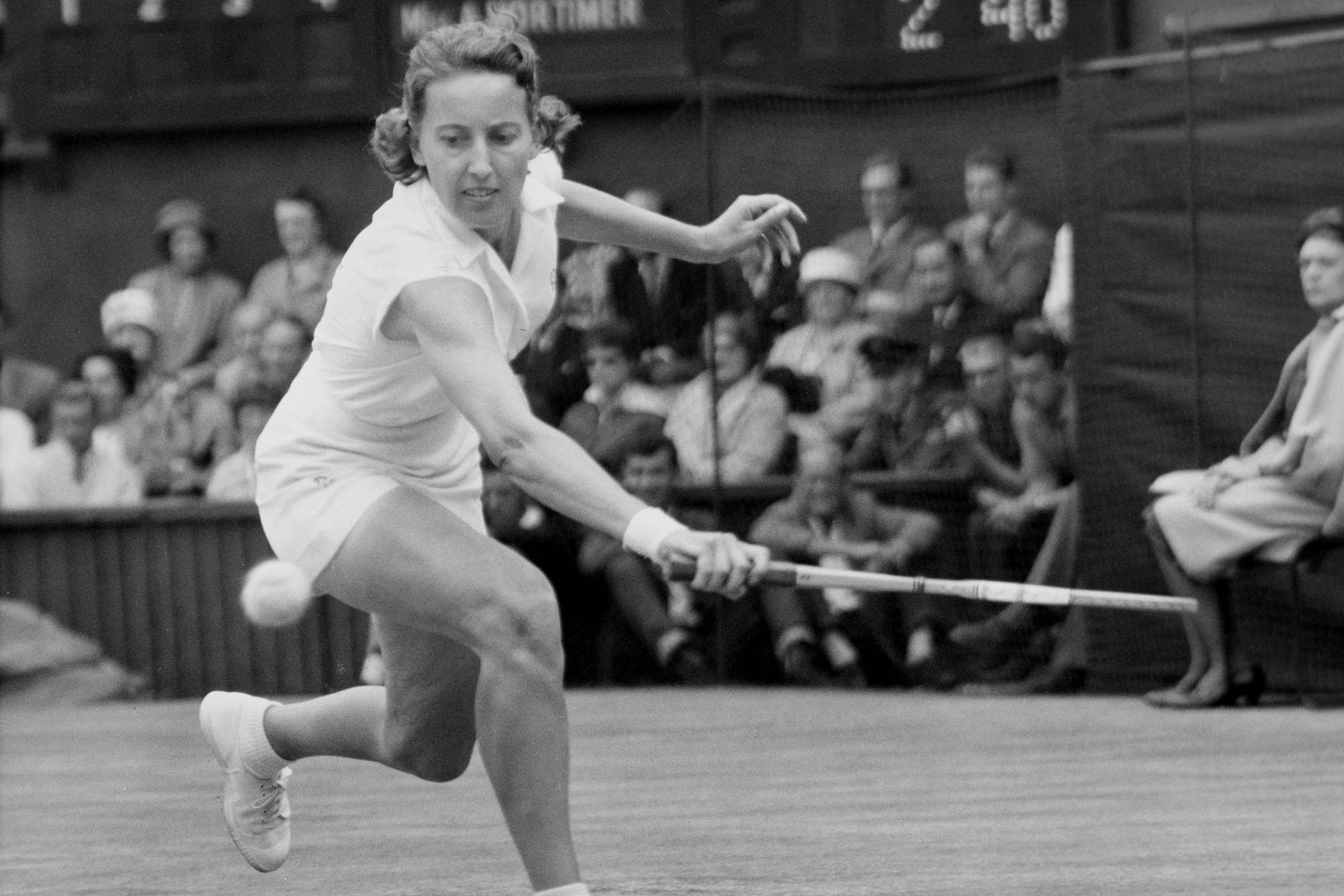The 1961 Wimbledon ladies singles final, the first between two British players since 1914, was a clash of styles. The 20-year-old Christine Truman was younger than Angela Mortimer by nine years, much taller and more physical. Mortimer was slight and prone to illness but she had court craft and dogged persistence. Unlike most women, she also played in shorts, while Truman wore a designer dress. It was only 30 years earlier that Joan Lycett had been the first to play at Wimbledon without stockings.
One thing the women had in common was a sensory disability. Mortimer was partially deaf, which unfairly gave her a reputation for rudeness when she simply wasn’t able to hear people, while Truman had been almost blind in her left eye since childhood.
The Times described the final as “a battle of the tactical brain of the frail Miss Mortimer against the power of Miss Truman”. On a rainy day, the younger player won the first set and was leading in the second when a shot from Mortimer deflected off the net cord. Truman slipped as she changed direction and tweaked an old achilles problem. Sniffing a vulnerability, Mortimer played lobs and drop shots to make her opponent run around. “When you’re not built like an Amazon you have to use your brains more,” she said.
Her 4-6, 6-4, 7-5 victory made Mortimer the first British winner since Dorothy Round in 1937, but as an amateur it earned her only a £20 voucher to spend at a sports shop. She retired in 1962 and worked for the next nine years as an assistant for Ted Tinling, a celebrated designer of tennis outfits, who had created Truman’s dress for the final.
Florence Angela Margaret Mortimer was born in Plymouth in 1932. During the war, she was evacuated to Dartmoor, where she rashly tried to dig up an exploded bomb. She did not play tennis until she was 15 – her school’s court had been used as a chicken run. After winning a doubles competition with her sister, she saw an advert for free coaching at the Palace hotel in Torquay, made the two-hour bus ride and asked for a trial.
Arthur Roberts, the coach, was unimpressed, telling her she was too old and didn’t know how to hit the ball. When she insisted, he set her the task of hitting balls against a wall, sniffing: “You can’t do much harm there.” When he returned much later and saw her still hitting, he told her: “If you’re that bloody-minded, I guess you’ve got some chance.”
Mortimer made her Wimbledon debut aged 19 and reached the quarter-finals in 1953 and 1954. It was around this time that her hearing loss was discovered after a severe sinus infection. “Only then did I understand the reason I had been able to concentrate so intensely, shutting out every noise except the sound of the ball on the racket,” she said.
Her deafness may have helped in her doubles partnership with Anne Shilcock, who had annoyed previous partners by constantly commenting during matches. Mortimer couldn’t hear a word she said and together they won at Wimbledon in 1955.
A month earlier, Mortimer had won the French singles title, beating Dorothy Knode after losing the first set. Her tenacity showed in a match that lasted more than two hours and she won the next two sets 7-5, 10-8. Mortimer said she knew she was going to win in the final set when an exhausted Knode had asked if she could have a brandy.
Mortimer then contracted amoebic dysentery in Egypt, which left her feeling weak for two years. Seeking to convalesce, she used her savings to fly to Sydney for the Australian Championships in 1958, the only time she entered. She lost 10 games on the way to the final, where she beat Lorraine Coghlan, her landlady, 6-3, 6-4.
Despite this second major title, Mortimer was not considered to have much of a hope for that year’s Wimbledon, but she reached the final as an unseeded player – one of only five women to do so – before losing to Althea Gibson, the defending champion.
A remarkable period of success followed as she won 14 titles in 10 months. Another purple patch came in 1961, when she won eight tournaments out of 10. She retired as a singles player a year later, appropriately after winning the Torquay Open, where her career had begun, for her 108th title.
Mortimer reached the quarter-finals of the Wimbledon mixed doubles in 1966 with John Barrett, who became well known as a commentator. As manager of Britain’s Wightman Cup team against the US, Barrett had asked each member of the team for a dance. Mortimer was the only one who turned him down. For once, however, she had met someone who was even more determined than she was. In 1967, they were married at St Mary’s church, close to the All England Lawn Tennis Club, and later had two children.
In 2004, a bust of her was placed outside Centre Court. In later life, when she visited the club weekly to play bridge, she said that if she had not won, she would have kept trying until she was 86. “Wimbledon was all I ever dreamed of and, once I’d won, I didn’t have any more ambition,” she said. In her autobiography, she wrote that, unlike some, she had achieved her goal “without histrionics, frilly panties or becoming involved in the social tennis whirl”.
Florence Angela Margaret Mortimer Barrett, tennis player, was born on 21 April 1932, and died on 25 August 2025, aged 93
Photograph by Getty Images
